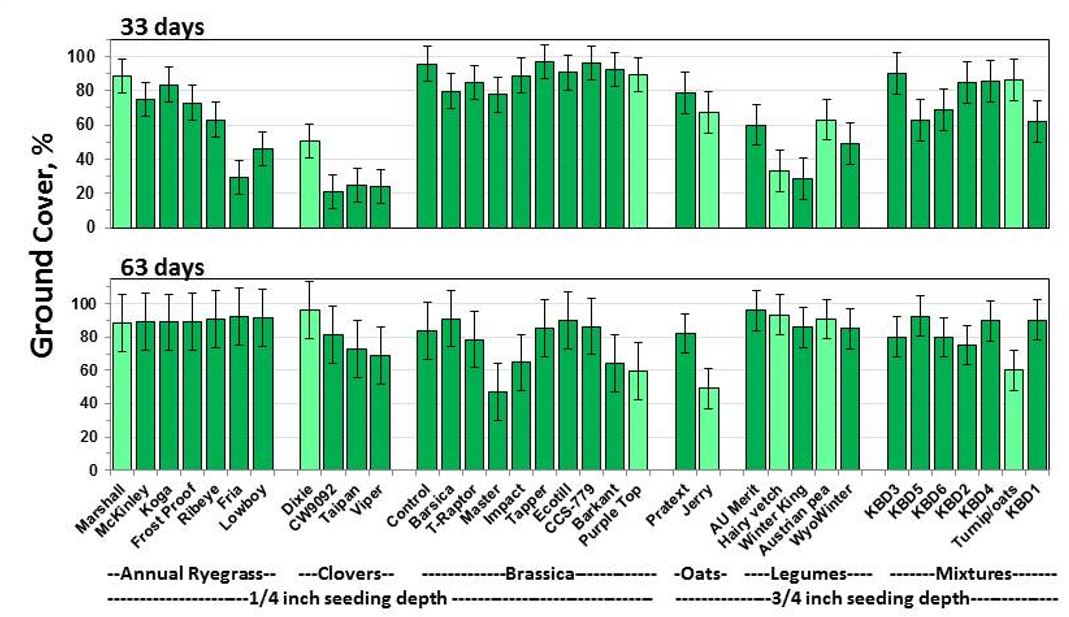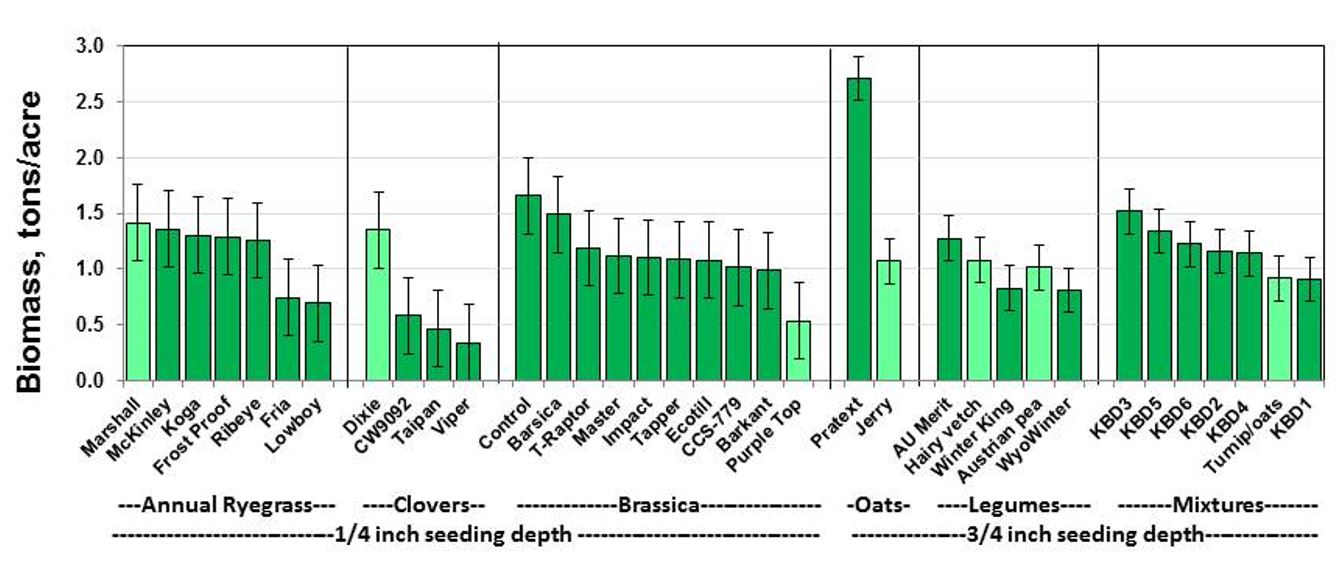Variety matters in cover crops
Cover crop varieties are not all created equal. Find out which one is best for your purpose in the 2019 Michigan Cover Crop Variety Test Report.

Rising interest in using cover crops to protect and improve soil in row crop, livestock, vegetable and fruit production systems has led to an explosion in seed availability. It can be challenging for growers to navigate all the choices and decide which seed to purchase. Selecting a cover crop species is the first decision, and this can be assisted using online tools such as the Midwest Cover Crop Council’s selector tools for row crops and vegetables. The next decision is variety within a plant species.
There are literally hundreds of available varieties within many species commonly used as cover crops because most of these species also have dual uses as crops in their own right, such as small grains for grain production and grasses, brassicas and clovers as forage. A variety that is ideal as a cover crop may need different plant traits than one that is ideal as a cash crop.
In response to demand, plant breeders have begun to develop and advertise varieties specifically for cover crop uses, but objective data is lacking comparing performance across environments. As with plant varieties used for cash crops, suitability of a particular variety for a particular purpose may not be the same in all parts of the U.S. because adaptation to climatic differences is a genetic trait. Some important and easily measured traits for cover crops include seedling vigor with fast growth to cover the soil quickly, biomass production potential at different times of year, weed control, winter kill potential and susceptibility to herbicides for easy termination.
In order to assist growers with navigating these choices, Michigan State University Extension has added cover crop variety testing to our slate of variety tests for cash crops and forages. Entries were solicited from seed marketers who entered varieties of annual ryegrass, brassicas, annual clovers, hairy vetch, winter peas, small grains and mixtures of species. These are compared within seeding depths (0.25 or 0.75 inch) for functional groups with similar plant traits. The functional groups are cool-season grass, legume and non-legume broadleaf.
The replicated test was planted in August 2018 at the Kellogg Biological Station in Hickory Corners, Michigan, and data was collected through May 2019. Entries were drilled into a prepared seedbed after removing forage soybeans and incorporating 30 pounds of starter nitrogen. Ground cover and weed control was measured approximately 30 and 60 days after planting and again in spring. Biomass was measured after killing frost in 2018 and again in April 2019 for varieties that survived winter. The final measurement was kill percentage after termination with herbicide.
The complete report can be read or downloaded online at 2019 Michigan Cover Crop Variety Test Report. A video summary is also available.
One highlight of the test results was differences among varieties and species for speed of ground cover (Fig. 1). At 33 days after planting, ground cover ranged from 29% to 89% for annual ryegrass varieties, while all brassica species/varieties had 78% or more. ‘Dixie’ crimson clover covered the ground quicker than berseem or balansa clover entries. ‘AU Merit’ hairy vetch covered ground quicker than the VSN hairy vetch check. Mixtures that grew more slowly tended to have little or no brassica in the seed mix (mixture proportions are available in the full report). Some brassicas, the oat check and the mixture check lost ground cover between 33 and 63 days, suggesting those varieties had already hit peak growth and were declining.

These results do not necessarily indicate one variety is always better or worse than another, but it does highlight how you can take advantage of this knowledge to select varieties. For example, if dealing with a very short growth window for a cover crop, you might want to select one with rapid ground cover but won’t need it to maintain that cover for a long period. Keep in mind that these results only apply to cover crops planted in late summer. Relative variety performance may differ if planted earlier or later.
Entry differences were also detected for fall biomass within annual ryegrasses, shallow- and deep-seeded legumes, small grains and mixtures (Fig. 2). In general, mixtures produced similar biomass to a single well-adapted cover crop. Overall weed pressure was low in this test so it was not possible to rate entries on competitiveness with weeds. Berseem clover, rapeseed, mustard, radish, turnip, oats winterkilled, while annual ryegrass, collards, crimson clover, balansa clover, hairy vetch and winter pea did not. Most overwintering covers proved easy to terminate with herbicide despite a late termination date necessitated by cold wet weather.

When using test results, always select species first based on your primary goal for using a cover crop. Then, select varieties within that species or functional group. When using mixtures, remember that seed species and proportions in commercial mixtures may change from year to year and may be different from the proportion used in this test. Always compare the current seed tag to published test proportions. Lastly, remember that seed proportion does not equal proportion of biomass in the final cover crop because seed size does not equate to plant size.
MSU Extension is inviting new entries for a cover crop variety test in 2020. Download the entry application with test conditions from the MSU Forage Connection Variety Testing page.
For more information about cover crops, contact Kim Cassida, forage and cover crop specialist, at cassida@msu.edu, or visit the Midwest Cover Crop Council website.



 Print
Print Email
Email